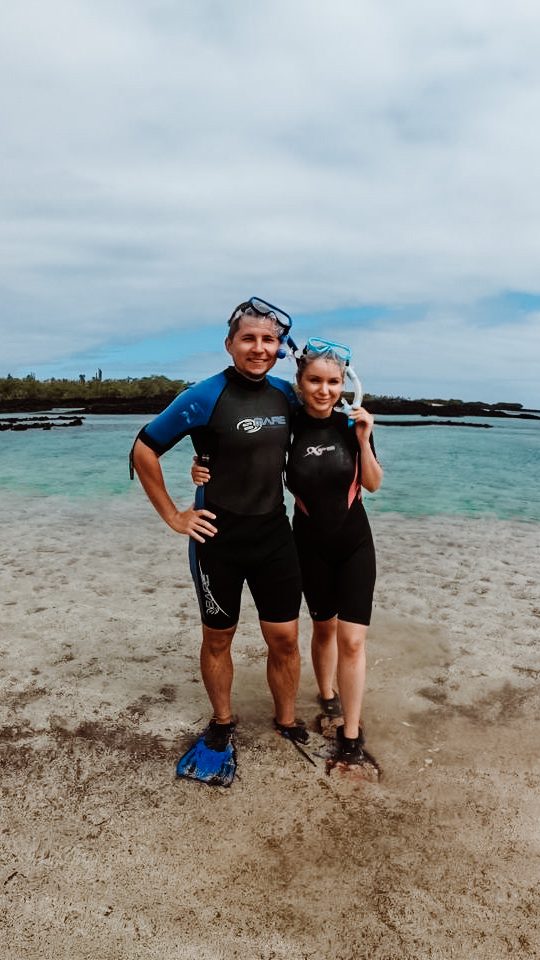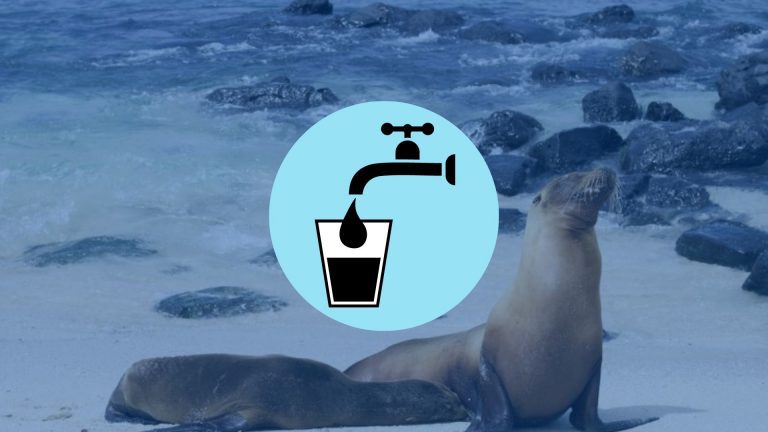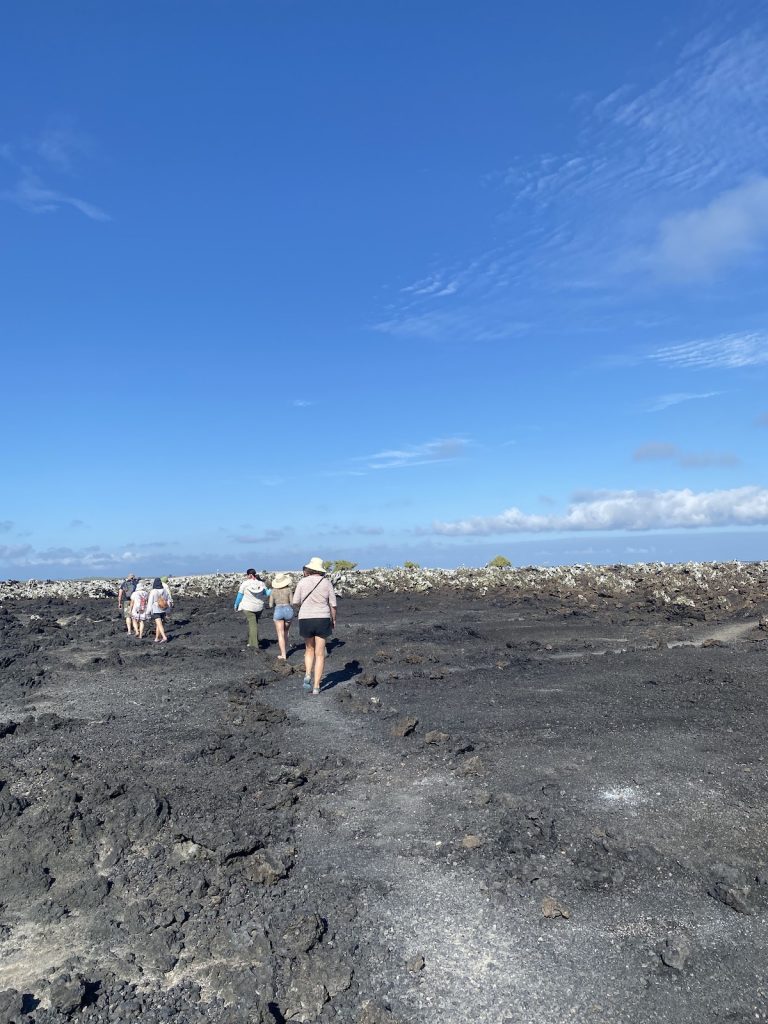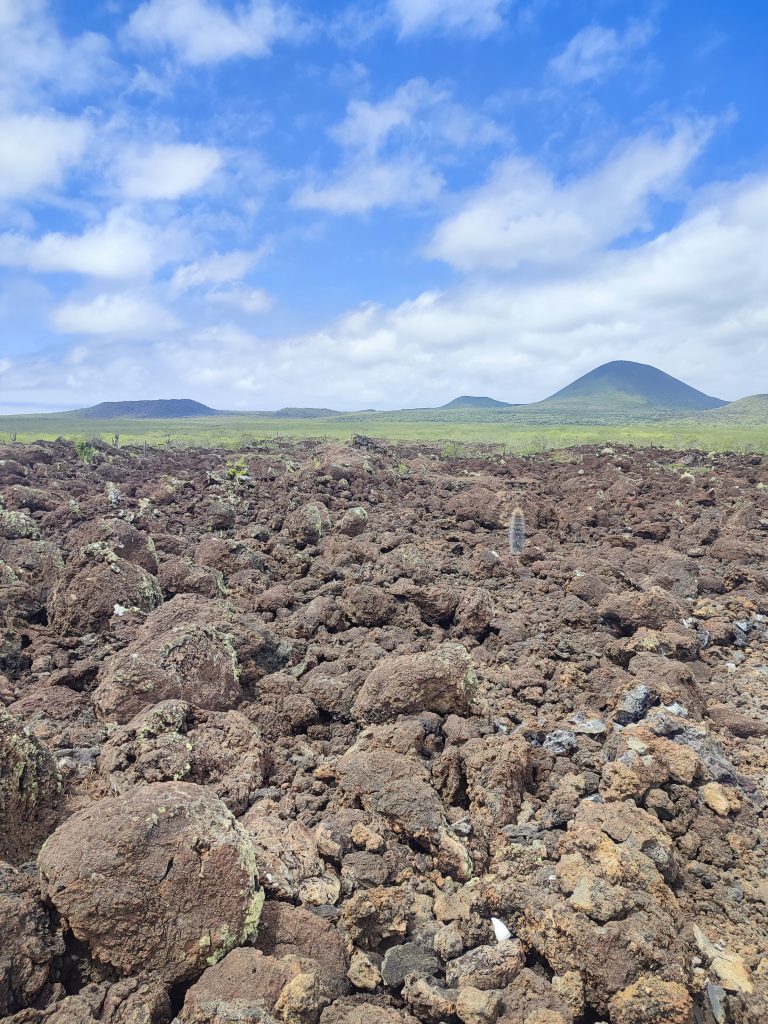Drinking tap water in the Galapagos is not recommended. The tap water here is typically salty and not safe for consumption, as much of it isn’t purified and may even be mixed with contaminated water. With limited resources, providing clean drinking water for the growing number of residents and tourists is a challenge. I’ve been using Sawyer water filtration system for years on my trip and used it on the Galapagos too.
Tap water is brackish and only available for a few hours each day in many households. The uneven distribution of water supply costs further complicates improving the water infrastructure. Fortunately, all yachts and most hotels provide clean drinking water in dispensers, which is also advised for brushing your teeth.
The increasing population places extra strain on water resources. Due to wastewater contamination, Floreana and Isabela Islands have to import their drinking and groundwater supplies. With the islands relying heavily on rainfall, they are particularly vulnerable to droughts as demand continues to grow.
Plan Your Galapagos Adventure Without Worrying About Clean Water! Get a FREE, customized travel itinerary from the most reputable local agency to help you navigate the islands safely and stress-free. Your free quote includes essential tips for staying healthy and hydrated while supporting local businesses and this blog.
Drinking Water Supply in Galapagos
In Ecuador, drinking tap water is generally unsafe, and that includes the Galapagos. Even in Puerto Ayora, the province’s most populous city, tap water remains brackish and unsuitable for drinking. This water is drawn from underground aquifers on the volcanic island, mixing seawater, rainwater, minerals, and man-made pollutants. Residents have access to this water for only two to four hours a day, making preservation a necessity.
For the 20,000 residents of Puerto Ayora, potable water remains an ongoing campaign promise that resurfaces every election season but often goes unfulfilled or becomes an unfinished project. Efforts to provide drinking water to the main islands date back to 2001, when an international tender was issued by Gustavo Noboa’s government, followed by a failed attempt by Lucio Gutiérrez’s administration, and another unsuccessful try under Alfredo Palacio.
Since 2013, the less populated islands of San Cristóbal, Isabela, and Floreana have gained access to potable water, while Puerto Ayora’s residents continue to face delays in their long wait for clean water.
How Did We Ensure That The Water We Drink During Our Trip Is Safe?
During our stay in Puerto Ayora, the capital of Santa Cruz Island, we rented a small house, and right away, we realized that drinking water is a major issue. The first thing the owner told us was not to drink the tap water. Freshwater is scarce in the Galapagos, and unfortunately, what little there is often gets contaminated by sewage.
To be cautious, we only ate at restaurants that seemed clean and avoided places that used wet glasses. Many places bring out glasses freshly rinsed, but that water is likely from the tap. We also skipped cold drinks and ice, which could be made with tap water, and avoided salads or any foods washed with water, since it’s hard to tell if the water is safe.
Stay Safe While Exploring the Galapagos! Let a trusted local agency handle your trip details with a FREE itinerary plan that includes expert advice on water safety, tours, and accommodations. Save time and enjoy peace of mind while supporting sustainable tourism and this blog.
We stuck to fruits and vegetables that we could peel ourselves and avoided any raw or undercooked foods. Fresh fruit shakes and juices were tempting, but we only bought them from vendors that looked clean and used purified water.
Ecuadorians are incredibly friendly and often offer something to drink. At one point, I was sitting in someone’s kitchen as they prepared a drink with lemon and tap water, but I politely declined.
During our hotel stay, we always requested bottled water, and thankfully, drinking water was readily available when we went on a Galapagos last-minute cruise. The water on board was safe, and any ice made on the ship used purified water. Each cabin came with reusable aluminum bottles, and there were water purifiers in the main bar, pool bar, restaurant, and disembarkation area, allowing us to refill bottles throughout the cruise. After all the island activities, we’d bring the bottle back to the ship, but I ended up taking mine home as a little souvenir.
If bottled water isn’t available, or you can’t boil water, a high-quality water filter that removes bacteria and viruses can be essential. Adding iodine tablets to filtered water also makes it safer. We found water filters at camping and outdoor stores, but make sure the filter removes viruses and bacteria—otherwise, even clear water can contain tiny contaminants that can make you sick.
Residents frequently reminded us to use purified water even for brushing our teeth and to avoid letting any tap water enter our mouths while showering.

Planning trip to Galapagos Islands?
My wife and I spent two weeks on these magnificent islands, visited nearly every possible tour, and explored as much as we could. I shared all the important details in my comprehensive Galapagos Islands Travel Guide, where I cover everything you need to know about planning a trip to the Galapagos.
Galapagos Islands travel might surprise you with extra fees to enter the islands, the complicated logistics between islands, booking tours, and knowing which spots are free to explore and which ones are not. I’ve covered it all in this Galapagos Travel Guide.
Also, if you’re planning a trip to the Galapagos, make sure to use my link for discounted hotel prices via Booking.com. It really helps support my blog!
Bottom Line
If you fall ill during your travels, contaminated water or food could be the culprit. Ecuador, being a tropical country, has its share of bacteria and parasites, and the Galapagos Islands are no exception. I’d recommend grabbing Sawyer water filtration system, it’s reliable and lightweight.
While most cases of illness are mild, traveler’s diarrhea is a common risk for everyone. To stay safe, only drink bottled water—never from the tap.






Hello,
I am traveling to Galapagos and am very concerned about the water, food and other things due to a sensitive stomach. You mentioned filters that removed bacteria and viruses. I am overwhelmend looking online. Can you please make any recommendations?
I used this bottle – https://amzn.to/3UNyoR6
Do not use any bottles. There are no filtration systems that you can purchase that will desalinize the water. Additionally tap water may contain human waste water. Unfortunately, you will have to buy bottled water.